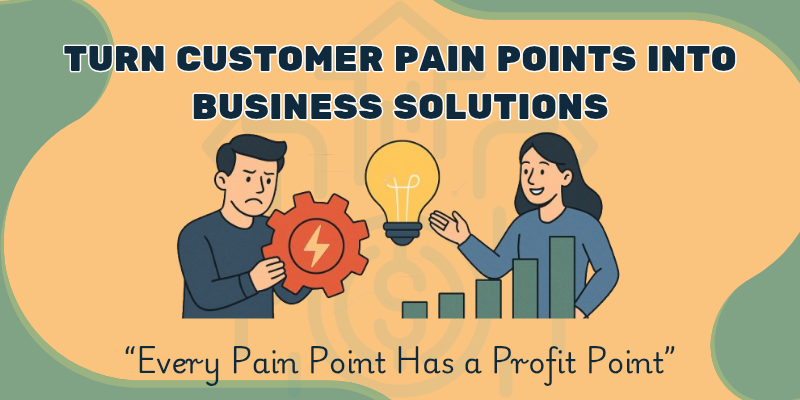Solving customer pain points isn’t just good service — it’s a smart growth strategy. Businessesthat actively listen and respond to customer frustrations build better products, create loyalusers, and unlock long-term revenue.
What Are Customer Pain Points?Customer pain points are persistent problems that users face with your product, service, orindustry. They can be:
1.Financial – Price feels too high or unclear value.
2.Productivity-related – Wasting time due to ine cient tools.
3.Support-based – Poor service or slow response.
4.Process-oriented – Complex, confusing experiences.
Understanding these pain categories helps teams tackle what matters most.
Why Pain Points Matter for Growth
Ignoring pain points leads to lost customers, negative reviews, and stunted growth. But whenaddressed, they highlight:
1.Product improvement opportunities
2.Gaps in customer service
3.Demand for better solutions
Solving them boosts retention, referrals, and brand loyalty.
How to Identify Pain Points in Real Time
Spot issues early by listening across channels:
1.Support transcripts and tickets
2.Customer reviews and surveys
3.User behavior analytics (e.g., heatmaps, bounce rates)
4.Social media and sentiment analysis
Real-time feedback helps you fix what’s broken before users walk away.
Turn Pain into Progress
After identifying pain points, prioritize them by frequency and impact. Don’t chasecomplaints — solve what aects customer success the most.
Use proven methods:
1.Root cause analysis to fix real issues, not just symptoms.
2.Customer journey mapping to find friction.
3.Jobs-to-be-done to understand what users truly need.
Build Long-Term Solutions
Quick fixes won’t scale. Create lasting value by:
1.Designing solutions that fit existing workflows
2.Testing and gathering feedback before rollout
3.Continuously improving based on real user input
Remember: Solving a problem once is good. Preventing it from returning is better.
Best Practices for Continuous Improvement
1.Create feedback loops with tools like Intercom or Hotjar.
2.Share updates based on customer input.
3.Align cross-functional teams around customer satisfaction KPIs.
When everyone — from product to marketing — works together on customer pain, you build amore resilient, responsive business.
Final Thought
Every pain point is a hidden growth opportunity. Customer pain points aren’t just problems —they’re business opportunities. Solving them leads to better products, loyal customers, andsustainable growth.
✅ Listen actively
✅ Act strategically
✅ Iterate continuously
That’s how pain becomes profit.
FAQs
1. What are customer pain points?
They are problems or frustrations customers face with a product, service, or experience.
2. Why should businesses solve them?Fixing pain points boosts satisfaction, loyalty, and drives growth.
3. How can I find these pain points?
Use surveys, support tickets, analytics, and social media feedback.
4. How do I turn pain points into solutions?
Analyze the root cause, map the customer journey, and prioritize fixes.
5. How does this help my business grow?It improves products, builds loyalty, earns referrals, and strengthens your brand.
